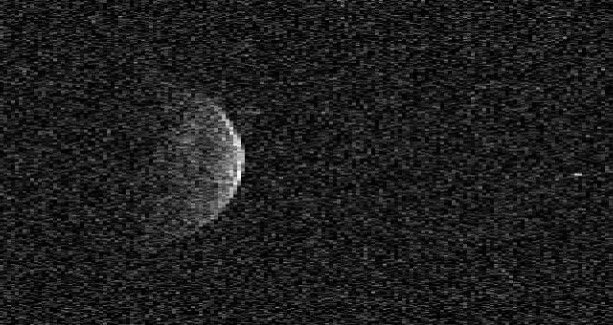Large Asteroid Near Earth Has Two Moons Orbiting It

The asteroid that swung by Earth last week was actually a party of three — scientists have reported that two moons are orbiting 3122 Florence as it races through space.
That setup is referred to as a triple asteroid, and it is rare. According to the Center for Near Earth Object Studies at NASA’s Jet Propulsion Laboratory, which tracks objects like Florence when they zoom by our planet, the triple asteroid is only the third ever discovered among the thousands of asteroids that orbit near Earth.
Other asteroids, however, have been found to have single moons. NASA said there are 60 total asteroids near Earth with moons.
Florence had people buzzing before it cruised by Earth on Sept. 1 from 4.4 million miles out because that distance, while it sounds enormous, is relatively close on a celestial scale. Although it is significantly farther away than the moon — which hovers almost 240,000 miles from us — it is still within our neighborhood. For perspective, Mars is about 35 million miles away.

“While many known asteroids have passed by closer to Earth than Florence … all of those were estimated to be smaller,” CNEOS manager Paul Chodas told Agence France Presse. “Florence is the largest asteroid to pass by our planet this close since the NASA program to detect and track near-Earth asteroids began.”
A NASA observatory in California used radar to track and watch Florence as it passed. Scientists reported that their observations confirmed how large the asteroid was, about 2.8 miles across, and discovered its two moons, which they estimate are between 300 and 1,000 feet across. They could not take more exact measurements of the moons and don’t know much about them right now.
“In the … radar images, which have a resolution of 75 meters, the moons are only a few pixels in extent and do not reveal any detail,” according to the CNEOS.
It was clear, however, that they have distinct orbits from one another.
“The times required for each moon to revolve around Florence are also not yet known precisely but appear to be roughly eight hours for the inner moon and 22 to 27 hours for the outer moon,” the CNEOS said.
Even though the moons were not very visibly in the radar images, the observations gave scientists a closer look at Florence itself. The researchers spotted a ridge along the center of the round asteroid and at least one large crater, as well as other topographical features on the space rock. They also saw that the asteroid rotates on its axis roughly every two and a half hours.
NASA put together the radar images of the asteroid to build a sequence, which represents movements over several hours, that shows Florence rotating completely two times and shows its moons in orbit.
According to the CNEOS, although Florence is moving away from Earth, it will be visible to observatories until Friday. Scientists are looking to learn more about the surface of the asteroid and the orbital periods of its two moons during these last observations. “Those results are valuable to scientists because they can be used to estimate the total mass and density of the asteroid.”
Did you miss the hype with Florence and want to watch NASA track another near-Earth object? You will get a chance when the asteroid 2012 TC4 passes the planet from between 4,200 miles and 170,000 miles away. Scientists around the world are using the event as a drill, to test our planetary defense systems that are geared toward responding to and protecting us against a potentially dangerous asteroid.
© Copyright IBTimes 2025. All rights reserved.




















